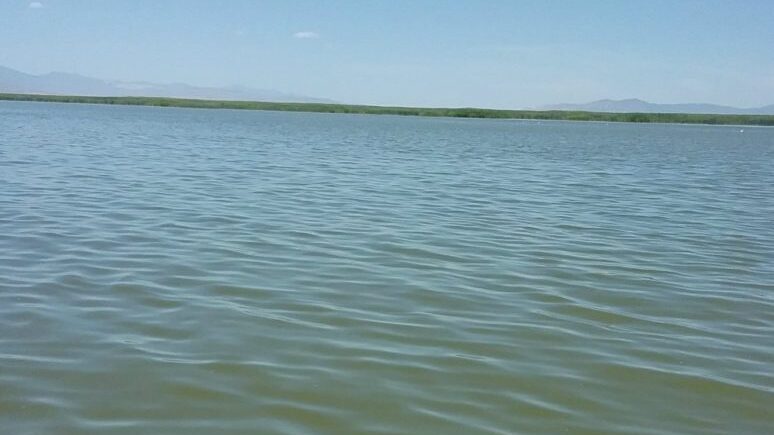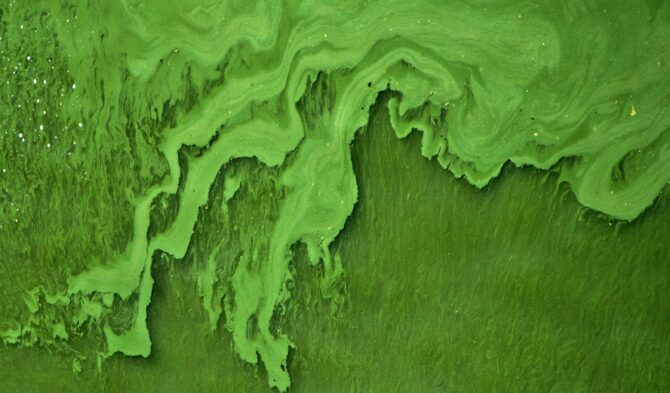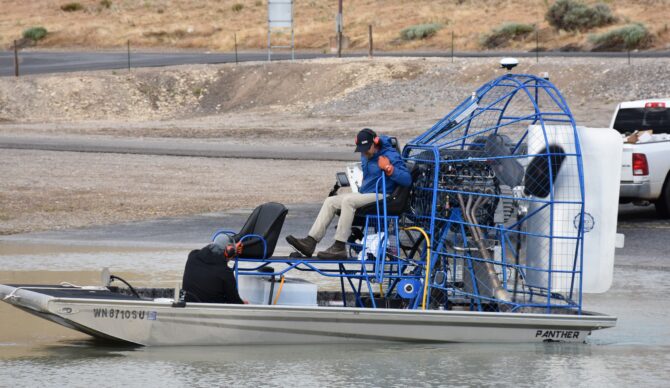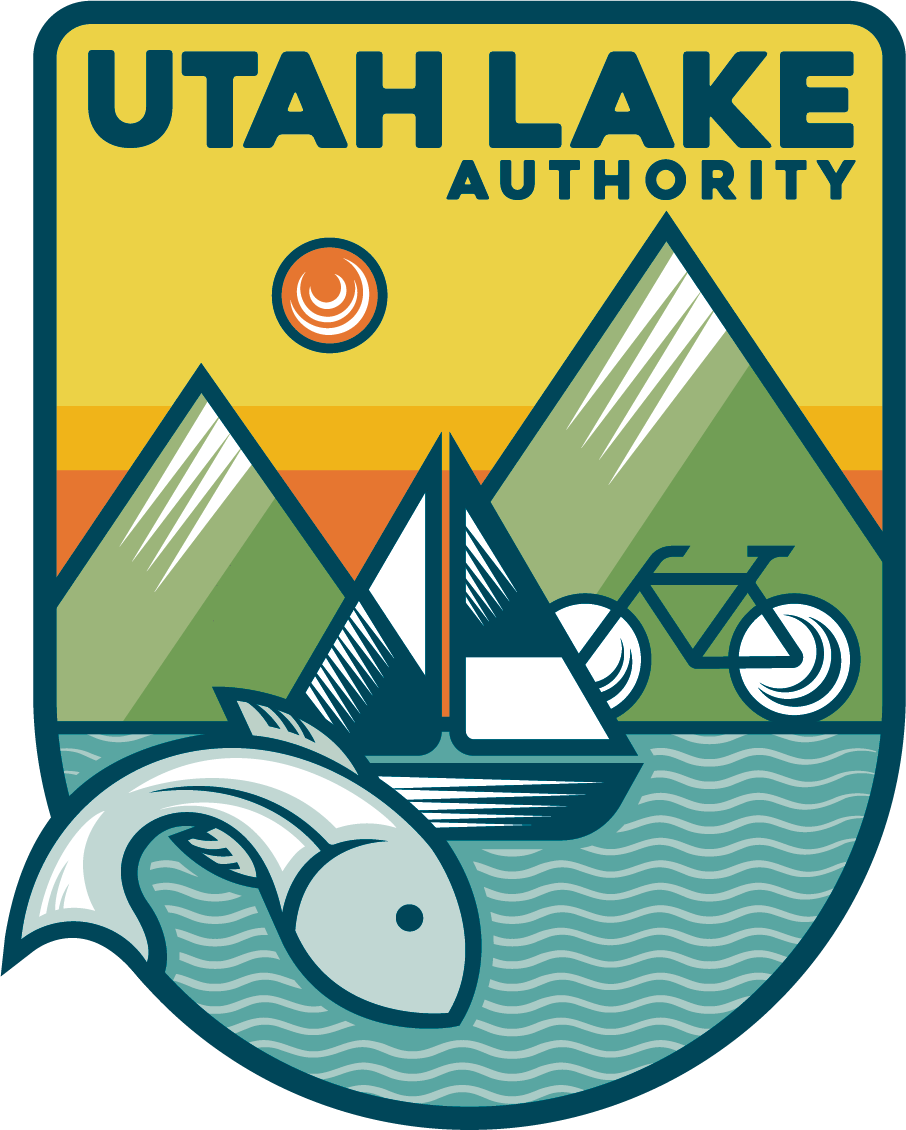
In the last few decades, many groups have joined in the effort to restore Utah Lake to its original splendor. Projects such as carp removal, phragmites treatment, and wetland restoration have made great strides improving this treasured but underutilized natural resource.
While many issues Utah Lake faces can be traced to human activity, there’s one problem that has likely existed in the lake for centuries and continues to affect recreators and researchers alike: harmful algal blooms.
Blooms are common occurrences in lakes around the world and similarly occur in popular lakes and reservoirs around Utah.
Though shallow valley-bottom lakes are targets for frequent algal blooms, there are management practices that can reduce their scope and frequency even in environments otherwise well suited for sustaining blooms. Here’s what you should know about algal blooms and what’s being done about them.
What Causes Harmful Algal Blooms?
Harmful algal blooms, also known as HABs, occur when cyanobacteria (often referred to as blue-green algae) multiply rapidly due to favorable conditions such as warm temperatures, high nutrient levels, calm waters, and exposure to sunlight.
Algae helps convert sunlight into energy. And while its role in aquatic ecosystems is vital—contributing to oxygen production and nitrogen fixation—its uncontrolled growth can disrupt the delicate balance of ecosystems.

Why Does Utah Lake Get Blooms?
Utah Lake is often portrayed as the poster child for algal blooms. However, many lakes and reservoirs experience blooms as well. Here are some features that create a prime environment for cyanobacteria growth.
Temperature
Cyanobacteria like warmer waters, which is why they mostly occur during hot summers and extend into early fall. As the water warms up, cyanobacteria begin to thrive. Utah Lake is in a basin, without much tree cover to shade the lake and keep it cool. It is also shallow, meaning the full depth warms faster than other water bodies around the state.
Utah’s changing climate induces shifts in temperature and precipitation patterns as well, which may also exacerbate HAB occurrences.
Nutrient Levels
Cyanobacteria need nutrients to thrive, specifically nitrogen and phosphorus, which exist in abundance in Utah Lake. These nutrients can come from agricultural runoff, wastewater discharge, and urban development. As nutrient concentrations go up, it can lead to eutrophication—a nutrient-rich environment that supports rapid algae and cyanobacterial growth.
Due to the shallow nature and large surface area of the lake, these nutrients don’t sink to the bottom and permanently settle.
Depth
The shallowness of Utah Lake exacerbates the issues of temperature and nutrients, as the water heats up more quickly and frequent windstorms tend to keep nutrients stirred up.
Light
Cyanobacteria need light to grow. Water bodies often allow in the perfect amount of light for these organisms to spread. Utah Lake’s turbidity can hinder light access to some degree, but as heavier sediments settle between storms, the suspended nutrients can create ideal conditions for blooms.
Size
While size isn’t a direct cause of HABs, it does create a wider range where they can occur. Because Utah Lake is so big (around 97,000 surface acres), there are calm bays and stagnant areas where HABs can develop. They can also affect multiple areas at one time. Alternatively, in smaller lakes and reservoirs, the size and number of HABs may be smaller due to the smaller surface area.
Other Lakes That Get Blooms
Now, it’s easy to assume that Utah Lake is the problem lake of the state or to think that you can just avoid it and enjoy all the other water bodies, but the truth is that many water bodies face challenges with harmful algal blooms as well. Some popular examples in Utah include:
- Deer Creek Reservoir
- Strawberry Reservoir
- Jordanelle Reservoir
- Yuba Lake
- Payson Lakes
- Calf Creek
Cyanobacteria exist in almost any waterbody, which means HABs can exist in these locations too, given the right conditions.

What’s Being Done to Manage Algal Blooms?
While completely preventing HABs is difficult, there are ways to reduce the frequency and severity of them. Through a combination of ecosystem enhancements, nutrient controls, and chemical treatments, there are feasible options to pursue.
Reduce Human Factors
Efforts to control nutrient pollution from human sources are crucial to prevent excessive nutrient enrichment. Implementing best practices in agriculture, managing stormwater runoff, and improving wastewater treatment systems can help reduce nutrient inputs into the lake.
Everyday citizens can also contribute to the effort by:
- Using less fertilizer (or being sure to sweep off the sidewalks and driveway after fertilizing to keep the excess from washing down the storm drains)
- Using phosphorus-free fertilizer
- Keeping storm drains free from debris
- Picking up pet waste
These actions help reduce the amount of nutrients that makes its way into the lake.

Implement Treatment
Ongoing research studies around the water quality of the lake have helped determine some primary causes of blooms as well as practical treatment options.
There have been a few different treatment efforts in different spots of the lake, both to treat current blooms as well as to prevent future issues. Treatments have been effective but are still in testing phases to determine if they are a safe, sustainable way to mitigate HABs on a lake-wide basis.

Harmful algal blooms pose a complex challenge to the health of Utah Lake. Striking a balance between preserving ecological integrity and safeguarding human health requires collaborative efforts from researchers, policymakers, and the public. By addressing the root causes of HABs and implementing effective management strategies, we can help this aquatic ecosystem continue to thrive.
